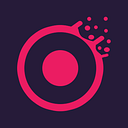Introduction to Swift: A Modern and Expressive Journey
Welcome to the vibrant world of Swift! Developed by Apple in 2014, Swift is not just a programming language; it is a companion on your journey into the realms of iOS, macOS, watchOS, tvOS, and even the Linux universe. Let’s explore why Swift is a modern, expressive language that captures the essence of efficient and enjoyable programming.
Table of Contents
· Swift’s Modernity
· Versatility Across Apple Ecosystems and Beyond
· Printing in Swift: A Hello World Customized
· Basic Syntax and Usage of the print Statement
· Opening a Playground in Xcode:
· Creating a New iOS App Project in Xcode:
· Exercise: Modify the “Hello, World!” Code
· Bringing It All Together
Previously, we learned how to set up Swift and iOS app development environments. Click the link below:
Swift’s Modernity
Swift has rapidly become the language of choice due to its modern features and syntax. Its design emphasizes clarity and simplicity, making it a powerful tool for developers of all skill levels. With Swift, you can express complex ideas in a concise and readable manner.
Versatility Across Apple Ecosystems and Beyond
One of Swift’s remarkable strengths lies in its versatility. It is the primary language for developing applications across various Apple platforms:
- iOS: Craft applications for iPhones and iPads.
- macOS: Develop software for Mac computers.
- watchOS: Create apps for Apple Watches.
- tvOS: Build immersive experiences for Apple TVs.
But Swift’s reach extends beyond the Apple ecosystem, making it an excellent choice for Linux-based projects. This adaptability underscores its status as a language for diverse and cross-platform development.
Printing in Swift: A Hello World Customized
Now that we’ve set the stage, let’s delve into Swift’s practical side. Printing is often the first step in any programming journey, and in Swift, it’s both straightforward and versatile.
Basic Syntax and Usage of the print Statement
In Swift, the print statement is your trusty companion for sending messages to the console. Its basic syntax looks like this:
print("Hello, World!")This line of code instructs Swift to display “Hello, World!” in the console when the program runs. But why stop at the generic greeting? Let’s personalize it!
Xcode have two different options to write Swift code, either you can write and run your code in a Playground or inside a Project
Opening a Playground in Xcode:
- Open Xcode: Find and open Xcode on your Mac. If you haven’t installed it yet, head to the App Store and download Xcode.
- Create a New Playground: In the Xcode welcome window, select “Get started with a playground.” Alternatively, go to “File” > “New” > “Playground.”
- Choose a Template: Select “Blank” under iOS or macOS, and give your playground a name.
- Create Playground: Choose a location to save your playground and click “Create.”
Creating a New iOS App Project in Xcode:
- Open Xcode: Launch Xcode on your Mac.
- Create a New Project: Click on “Create a new Xcode project” or select “File” > “New” > “Project…”
- Choose a Template: Select “Single View App” and click “Next.”
- Configure Your Project: Fill in the project details (Product Name, Team, Organization Identifier, etc.).
- Choose a Location: Decide where to save your project and click “Create.”
the following instructions with a visual walkthrough will be found in my previous article “Create Your First iOS Project” section
Exercise: Modify the “Hello, World!” Code
Open your Xcode playground or project and locate the line with the print("Hello, World!") statement. Now, let's make it your own. Replace it with something like:
let name = "Your Name"
print("Hello, \(name)! Welcome to the Swift adventure.")Here, we’ve introduced a variable name and used string interpolation to create a personalized message. The \() syntax allows us to embed the variable's value within the string.
Bringing It All Together
Congratulations! You’ve just customized your first Swift program. This simple exercise demonstrates the core concepts of Swift’s syntax, string manipulation, and variable usage.
In the upcoming chapters, we’ll venture deeper into Swift’s features, exploring variables, data types, conditions, loops, and much more. Each step will bring you closer to mastering Swift and unleashing your creativity in the world of app development.
Stay tuned for the next chapter, where we’ll dive into the foundations of Swift, laying the groundwork for your exciting journey ahead.
Happy coding!

